Your cart is currently empty!
Tag: Gated
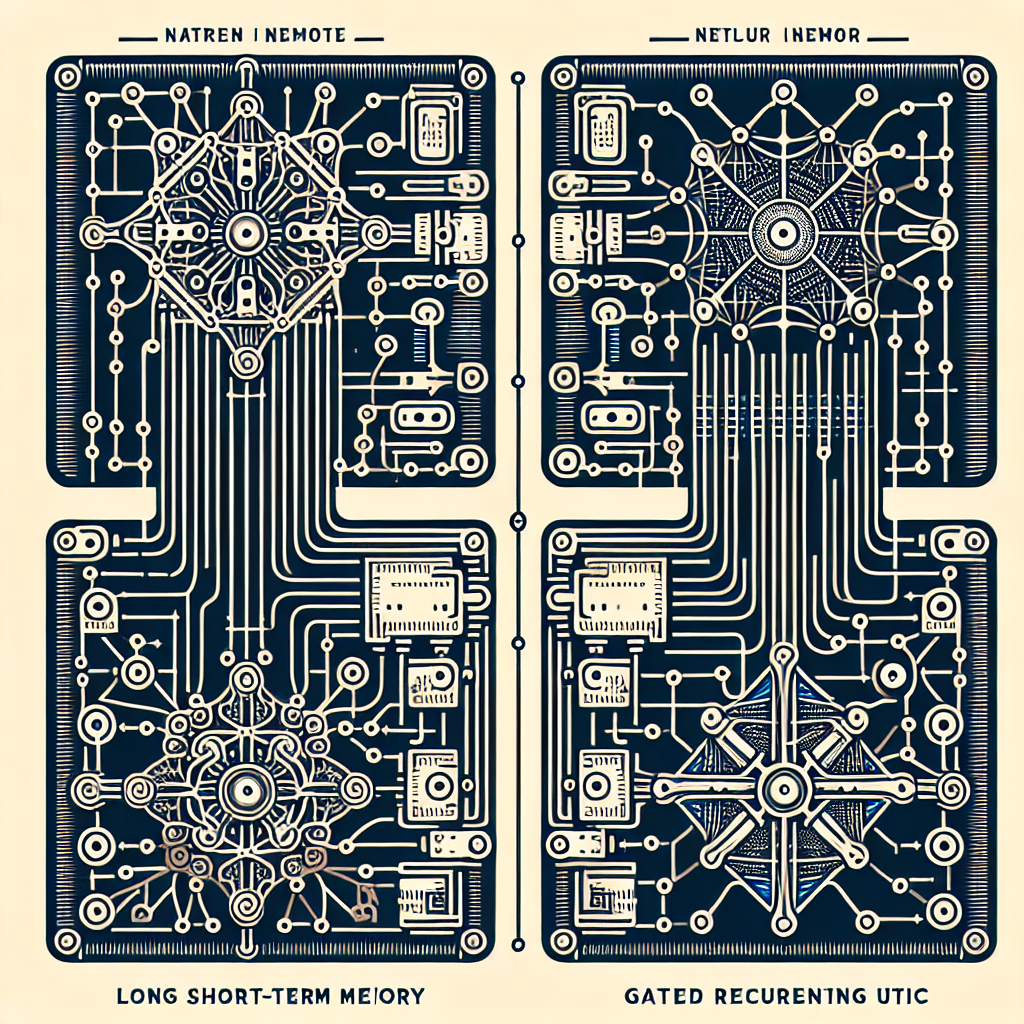
Comparing Different Gated Architectures in Recurrent Neural Networks: LSTM vs. GRU
Recurrent Neural Networks (RNNs) have become a popular choice for sequential data modeling tasks such as natural language processing, speech recognition, and time series analysis. One key component of RNNs is the gated architecture, which allows the network to selectively update and forget information over time. Two commonly used gated architectures in RNNs are Long Short-Term Memory (LSTM) and Gated Recurrent Unit (GRU).LSTM was introduced by Hochreiter and Schmidhuber in 1997 and has since become a widely used architecture in RNNs. LSTM has a more complex structure compared to traditional RNNs, with additional gates controlling the flow of information. These gates include the input gate, forget gate, and output gate, which allow the network to store and retrieve information over long sequences. This makes LSTM well-suited for tasks requiring long-term dependencies and is particularly effective in handling vanishing and exploding gradients.
On the other hand, GRU was introduced by Cho et al. in 2014 as a simpler alternative to LSTM. GRU combines the forget and input gates into a single update gate, which simplifies the architecture and reduces the number of parameters. Despite its simplicity, GRU has been shown to perform comparably to LSTM in many tasks and is faster to train due to its reduced complexity.
When comparing LSTM and GRU, there are several factors to consider. LSTM is generally better at capturing long-term dependencies and is more robust to vanishing gradients, making it a good choice for tasks with complex sequential patterns. However, LSTM is also more computationally intensive and may be slower to train compared to GRU.
On the other hand, GRU is simpler and more efficient, making it a good choice for tasks where speed and computational resources are limited. GRU has fewer parameters and is easier to train, which can be advantageous for smaller datasets or real-time applications.
In practice, the choice between LSTM and GRU often comes down to the specific task at hand and the available computational resources. LSTM is a good choice for tasks requiring long-term dependencies and complex sequential patterns, while GRU is a more efficient option for tasks where speed and simplicity are key. Researchers and practitioners should consider these factors when selecting the gated architecture for their RNN models and experiment with both LSTM and GRU to determine which performs best for their specific task.
#Comparing #Gated #Architectures #Recurrent #Neural #Networks #LSTM #GRU,recurrent neural networks: from simple to gated architectures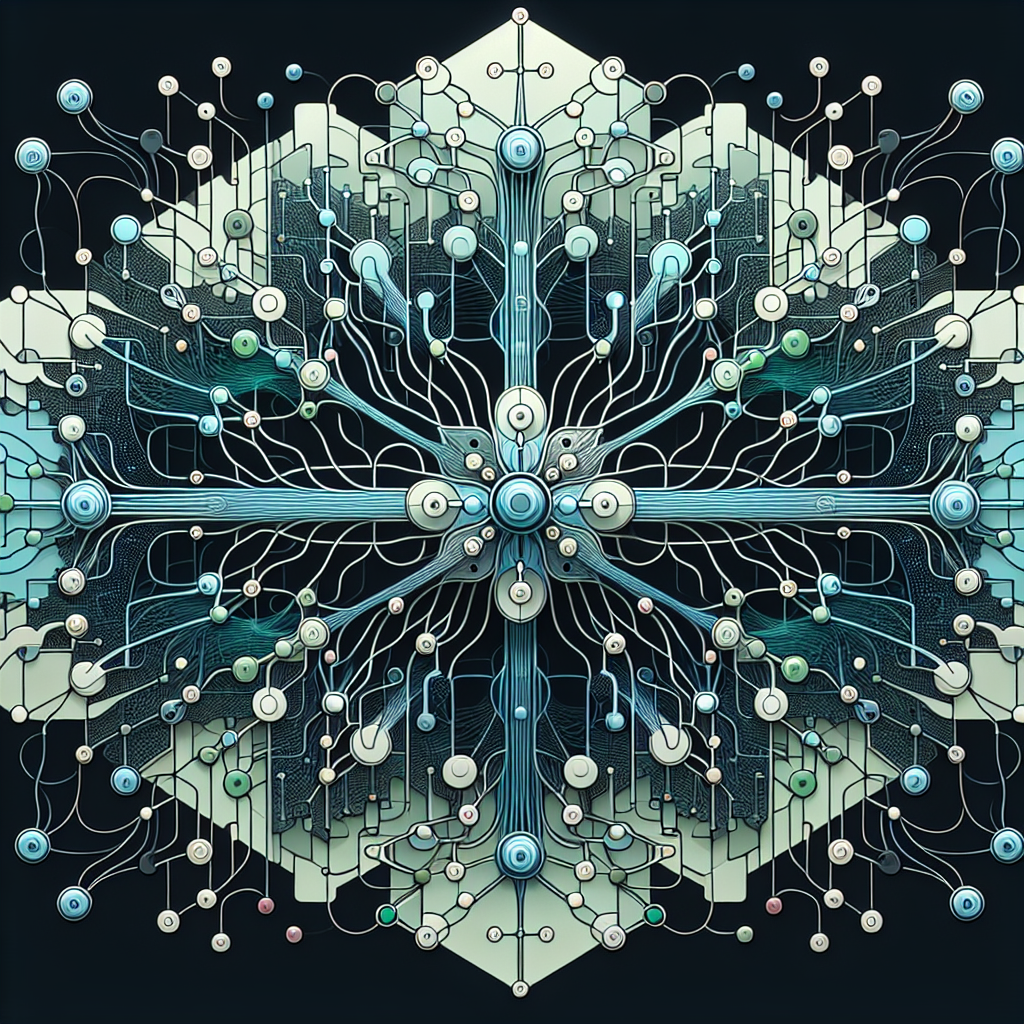
Unlocking the Power of Gated Units in Recurrent Neural Networks: A Comprehensive Overview
Recurrent Neural Networks (RNNs) have gained immense popularity in the field of deep learning due to their ability to model sequential data and capture dependencies over time. One key component of RNNs that plays a crucial role in their performance is the gated units. Gated units, such as the Long Short-Term Memory (LSTM) and Gated Recurrent Unit (GRU), are designed to address the vanishing gradient problem that plagues traditional RNNs, allowing them to effectively capture long-range dependencies in sequential data.In this article, we will provide a comprehensive overview of the power of gated units in RNNs and how they enable the modeling of complex sequential data. We will discuss the architecture of gated units, their advantages over traditional RNNs, and their applications in various domains.
The architecture of gated units, such as LSTM and GRU, consists of multiple gates that control the flow of information in and out of the unit. These gates include an input gate, forget gate, and output gate, each of which serves a specific purpose in processing the input data and updating the hidden state of the network. The input gate regulates the flow of new information into the unit, the forget gate controls the retention or deletion of information from the previous time step, and the output gate determines the output of the unit at the current time step.
One of the key advantages of gated units in RNNs is their ability to learn long-range dependencies in sequential data. Traditional RNNs struggle with capturing long-term dependencies due to the vanishing gradient problem, where gradients become exponentially small as they are backpropagated through time. Gated units address this issue by allowing the network to selectively store or discard information at each time step, enabling the model to remember important information over longer periods of time.
The power of gated units in RNNs extends beyond just modeling sequential data. They have been successfully applied in various domains, including natural language processing, time series forecasting, and speech recognition. In natural language processing tasks, such as language translation and sentiment analysis, gated units have been shown to improve the performance of RNN models by capturing complex linguistic patterns and dependencies in text data. In time series forecasting, gated units have been used to model temporal dependencies in financial data, weather data, and other time-varying signals. In speech recognition tasks, gated units have been shown to enhance the accuracy of speech recognition systems by capturing the nuances of spoken language and improving the robustness of the model to noise and variability in the input data.
In conclusion, gated units are a powerful tool in the arsenal of deep learning practitioners, enabling the modeling of complex sequential data and capturing long-range dependencies in RNNs. By understanding the architecture and advantages of gated units, researchers and practitioners can unlock the full potential of RNNs in a wide range of applications. As deep learning continues to advance, gated units are likely to play an increasingly important role in shaping the future of artificial intelligence and machine learning.
#Unlocking #Power #Gated #Units #Recurrent #Neural #Networks #Comprehensive #Overview,recurrent neural networks: from simple to gated architectures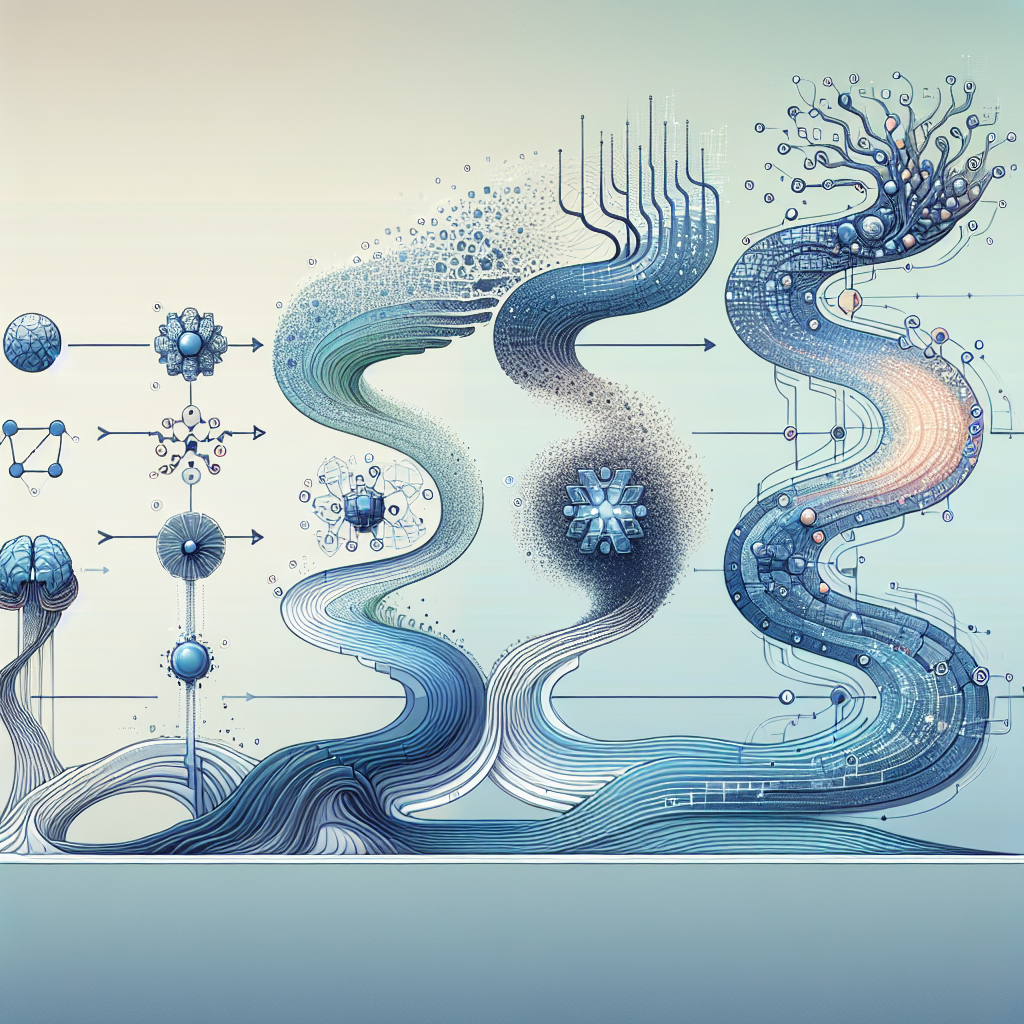
From Simple RNNs to Complex Gated Architectures: Evolution of Recurrent Neural Networks
Recurrent Neural Networks (RNNs) have been a fundamental building block in the field of deep learning for processing sequential data. They have the ability to retain information over time, making them well-suited for tasks such as language modeling, speech recognition, and time series prediction. However, traditional RNNs have limitations in capturing long-range dependencies in sequences, known as the vanishing gradient problem.To address this issue, researchers have developed more sophisticated architectures, such as Long Short-Term Memory (LSTM) and Gated Recurrent Unit (GRU), which are known as gated architectures. These models incorporate gating mechanisms that control the flow of information within the network, allowing it to selectively update and forget information at each time step.
LSTM, proposed by Hochreiter and Schmidhuber in 1997, introduced the concept of memory cells and gates to address the vanishing gradient problem. The architecture consists of three gates – input gate, forget gate, and output gate – that regulate the flow of information, enabling the network to learn long-term dependencies more effectively.
GRU, introduced by Cho et al. in 2014, simplifies the architecture of LSTM by combining the forget and input gates into a single update gate. This reduces the number of parameters in the model, making it computationally more efficient while achieving comparable performance to LSTM.
Recently, researchers have also explored more complex gated architectures, such as the Gated Linear Unit (GLU) and the Transformer model. GLU, proposed by Dauphin et al. in 2016, incorporates a multiplicative gate mechanism that allows the network to selectively attend to different parts of the input sequence. This architecture has shown promising results in tasks such as machine translation and language modeling.
The Transformer model, introduced by Vaswani et al. in 2017, revolutionized the field of natural language processing by eliminating recurrence entirely and relying solely on self-attention mechanisms. This architecture utilizes multi-head self-attention layers to capture long-range dependencies in sequences, achieving state-of-the-art performance in various language tasks.
Overall, the evolution of recurrent neural networks from simple RNNs to complex gated architectures has significantly improved the model’s ability to learn and process sequential data. These advancements have led to breakthroughs in a wide range of applications, showcasing the power and flexibility of deep learning in handling complex sequential tasks. As research in this field continues to progress, we can expect further innovations in architecture design and training techniques that will push the boundaries of what is possible with recurrent neural networks.
#Simple #RNNs #Complex #Gated #Architectures #Evolution #Recurrent #Neural #Networks,recurrent neural networks: from simple to gated architectures
Exploring LSTM and GRU Architectures: A Deep Dive into Gated Recurrent Neural Networks
Recurrent Neural Networks (RNNs) have revolutionized the field of natural language processing, time series analysis, and many other sequential data tasks. However, traditional RNNs suffer from the vanishing gradient problem, making it difficult for them to learn long-term dependencies in sequential data. To address this issue, more advanced RNN architectures like Long Short-Term Memory (LSTM) and Gated Recurrent Unit (GRU) were introduced.LSTM and GRU are types of gated RNNs that have proven to be more effective in capturing long-term dependencies in sequential data compared to traditional RNNs. In this article, we will explore the architectures of LSTM and GRU in detail, highlighting their key components and how they address the vanishing gradient problem.
LSTM Architecture:
LSTM is a type of gated RNN that consists of three gates: the input gate, forget gate, and output gate. These gates control the flow of information through the network, allowing LSTM cells to selectively remember or forget information over time. The key components of an LSTM cell are as follows:
1. Input Gate: The input gate determines which information from the current input should be stored in the cell state. It is controlled by a sigmoid activation function that outputs values between 0 and 1, where 0 means forget and 1 means remember.
2. Forget Gate: The forget gate determines which information from the previous cell state should be forgotten. Similar to the input gate, it is controlled by a sigmoid activation function.
3. Cell State: The cell state stores the information that is passed through the input and forget gates. It acts as a memory unit that carries information over time.
4. Output Gate: The output gate determines which information from the cell state should be passed to the next time step. It is controlled by a sigmoid activation function and a tanh activation function that regulates the output value.
GRU Architecture:
GRU is a simplified version of LSTM that combines the forget and input gates into a single update gate. It also merges the cell state and hidden state into a single vector, making it more computationally efficient than LSTM. The key components of a GRU cell are as follows:
1. Reset Gate: The reset gate determines how much of the previous hidden state should be forgotten. It is controlled by a sigmoid activation function that outputs values between 0 and 1.
2. Update Gate: The update gate controls how much of the new hidden state should be updated with the current input. It is also controlled by a sigmoid activation function.
3. Hidden State: The hidden state stores the information passed through the reset and update gates. It acts as both the output of the cell and the input to the next time step.
In summary, LSTM and GRU are advanced RNN architectures that address the vanishing gradient problem by incorporating gating mechanisms to selectively store and retrieve information over time. While LSTM is more complex and powerful, GRU is simpler and more computationally efficient. Both architectures have been widely used in various applications such as machine translation, speech recognition, and sentiment analysis. Understanding the architectures of LSTM and GRU is essential for developing effective deep learning models for sequential data tasks.
#Exploring #LSTM #GRU #Architectures #Deep #Dive #Gated #Recurrent #Neural #Networks,recurrent neural networks: from simple to gated architectures
Mastering the Art of Recurrent Neural Networks: From Simple Models to Gated Architectures.
Mastering the Art of Recurrent Neural Networks: From Simple Models to Gated ArchitecturesRecurrent Neural Networks (RNNs) are a powerful class of artificial neural networks that are designed to handle sequential data. They have been widely used in various applications such as natural language processing, speech recognition, and time series analysis. In this article, we will explore the fundamentals of RNNs and delve into the more advanced gated architectures that have revolutionized the field of deep learning.
At its core, an RNN is a type of neural network that has connections between nodes in a directed cycle, allowing it to maintain a memory of past information. This enables RNNs to process sequential data by taking into account the context of previous inputs. However, traditional RNNs suffer from the vanishing gradient problem, where gradients become extremely small and learning becomes difficult over long sequences.
To address this issue, more advanced architectures such as Long Short-Term Memory (LSTM) and Gated Recurrent Unit (GRU) were introduced. These gated architectures incorporate mechanisms to selectively update and forget information, allowing them to better capture long-range dependencies in data. LSTM, in particular, has been shown to be highly effective in tasks requiring long-term memory retention, such as machine translation and sentiment analysis.
To master the art of RNNs, it is crucial to understand the inner workings of these architectures and how to effectively train and optimize them. This involves tuning hyperparameters, selecting appropriate activation functions, and implementing regularization techniques to prevent overfitting. Additionally, practitioners must be familiar with techniques such as gradient clipping and teacher forcing to stabilize training and improve convergence.
Moreover, the use of pre-trained word embeddings and attention mechanisms can further enhance the performance of RNN models in tasks involving natural language processing. By leveraging external knowledge and focusing on relevant parts of the input sequence, RNNs can achieve state-of-the-art results in tasks such as machine translation, text generation, and sentiment analysis.
In conclusion, mastering the art of recurrent neural networks requires a deep understanding of both the basic concepts and advanced architectures that underlie these models. By combining theoretical knowledge with practical experience in training and optimizing RNNs, practitioners can unlock the full potential of these powerful tools in solving complex sequential data tasks. With continuous advancements in the field of deep learning, RNNs are poised to remain a cornerstone in the development of intelligent systems for years to come.
#Mastering #Art #Recurrent #Neural #Networks #Simple #Models #Gated #Architectures,recurrent neural networks: from simple to gated architectures
Unraveling the Magic of Gated Architectures in Recurrent Neural Networks
Recurrent Neural Networks (RNNs) have been a powerful tool in the field of machine learning, particularly in tasks involving sequential data such as speech recognition, language modeling, and time series prediction. One of the key features that make RNNs so effective in handling sequential data is their ability to retain information over time through hidden states. However, traditional RNNs suffer from the vanishing gradient problem, which limits their ability to capture long-range dependencies in the data.To address this issue, researchers have developed a new class of RNNs known as Gated Architectures, which include models like Long Short-Term Memory (LSTM) and Gated Recurrent Unit (GRU). These architectures introduce gating mechanisms that control the flow of information through the network, allowing it to selectively update and forget information at each time step. This enables the model to better capture long-range dependencies in the data, making it more effective in tasks that require modeling complex temporal relationships.
One of the key components of gated architectures is the gate itself, which is a set of learnable parameters that determine how much information should be passed through the network at each time step. The gate consists of an input gate, output gate, and forget gate, each of which plays a crucial role in controlling the flow of information. The input gate controls how much new information should be added to the hidden state, the forget gate determines how much information should be discarded from the hidden state, and the output gate regulates how much information should be outputted to the next layer.
By learning to adaptively update and forget information based on the context of the input data, gated architectures are able to effectively model long-range dependencies in the data. This allows them to capture complex patterns and relationships that traditional RNNs struggle to capture, making them a powerful tool in a wide range of applications.
In conclusion, gated architectures in recurrent neural networks have revolutionized the field of machine learning by allowing models to better capture long-range dependencies in sequential data. By introducing gating mechanisms that control the flow of information through the network, these architectures enable the model to selectively update and forget information at each time step, making them more effective in tasks that require modeling complex temporal relationships. As researchers continue to explore and refine these architectures, we can expect to see even more exciting advancements in the field of sequential data modeling.
#Unraveling #Magic #Gated #Architectures #Recurrent #Neural #Networks,recurrent neural networks: from simple to gated architectures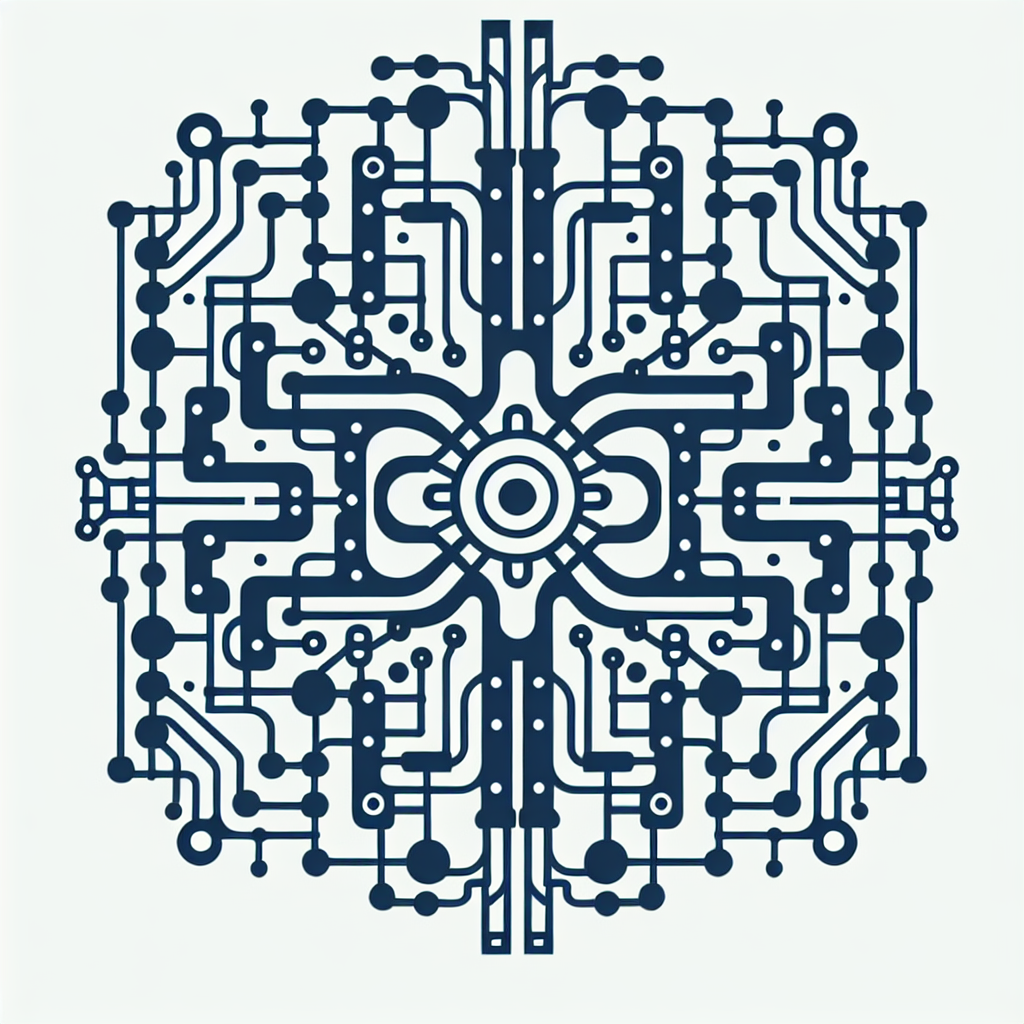
Building a Powerful Recurrent Neural Network: Leveraging Gated Architectures
Recurrent Neural Networks (RNNs) have become a popular choice for many tasks in the field of machine learning, particularly for handling sequential data such as time series data, text data, and speech data. However, traditional RNNs have limitations in capturing long-term dependencies in sequences, as they suffer from the vanishing gradient problem. This problem occurs when gradients become too small to effectively update the network parameters during training, leading to poor performance on long sequences.To address this issue, researchers have developed a class of RNNs known as Gated Recurrent Neural Networks (GRNNs), which include architectures like Long Short-Term Memory (LSTM) and Gated Recurrent Units (GRUs). These architectures incorporate gating mechanisms that allow the network to selectively update and forget information over time, enabling them to capture long-range dependencies more effectively.
In this article, we will discuss how to build a powerful recurrent neural network by leveraging gated architectures like LSTM and GRU.
1. Understanding LSTM and GRU:
LSTM and GRU are two popular gated architectures that have been widely used in various applications. LSTM has a more complex architecture with three gating mechanisms – input gate, forget gate, and output gate – that control the flow of information through the network. GRU, on the other hand, has a simpler architecture with two gates – reset gate and update gate.
2. Implementing LSTM and GRU in PyTorch:
To build a powerful recurrent neural network using LSTM or GRU, you can use popular deep learning frameworks like PyTorch. PyTorch provides easy-to-use modules for implementing LSTM and GRU layers, allowing you to easily incorporate these architectures into your models.
3. Tuning hyperparameters:
When building a recurrent neural network with LSTM or GRU, it is important to tune hyperparameters such as the number of hidden units, the learning rate, and the batch size. Experimenting with different hyperparameters can help you find the optimal configuration for your specific task.
4. Handling overfitting:
Like any other deep learning model, recurrent neural networks with gated architectures can suffer from overfitting if not properly regularized. Techniques such as dropout, batch normalization, and early stopping can help prevent overfitting and improve the generalization performance of your model.
5. Training and evaluation:
Once you have built your recurrent neural network with LSTM or GRU, it is important to properly train and evaluate the model on your dataset. You can use techniques like cross-validation and hyperparameter tuning to ensure that your model performs well on unseen data.
In conclusion, building a powerful recurrent neural network with gated architectures like LSTM and GRU can significantly improve the performance of your models on sequential data tasks. By understanding the principles behind these architectures, implementing them in deep learning frameworks like PyTorch, tuning hyperparameters, handling overfitting, and properly training and evaluating your models, you can leverage the full potential of RNNs for a wide range of applications.
#Building #Powerful #Recurrent #Neural #Network #Leveraging #Gated #Architectures,recurrent neural networks: from simple to gated architectures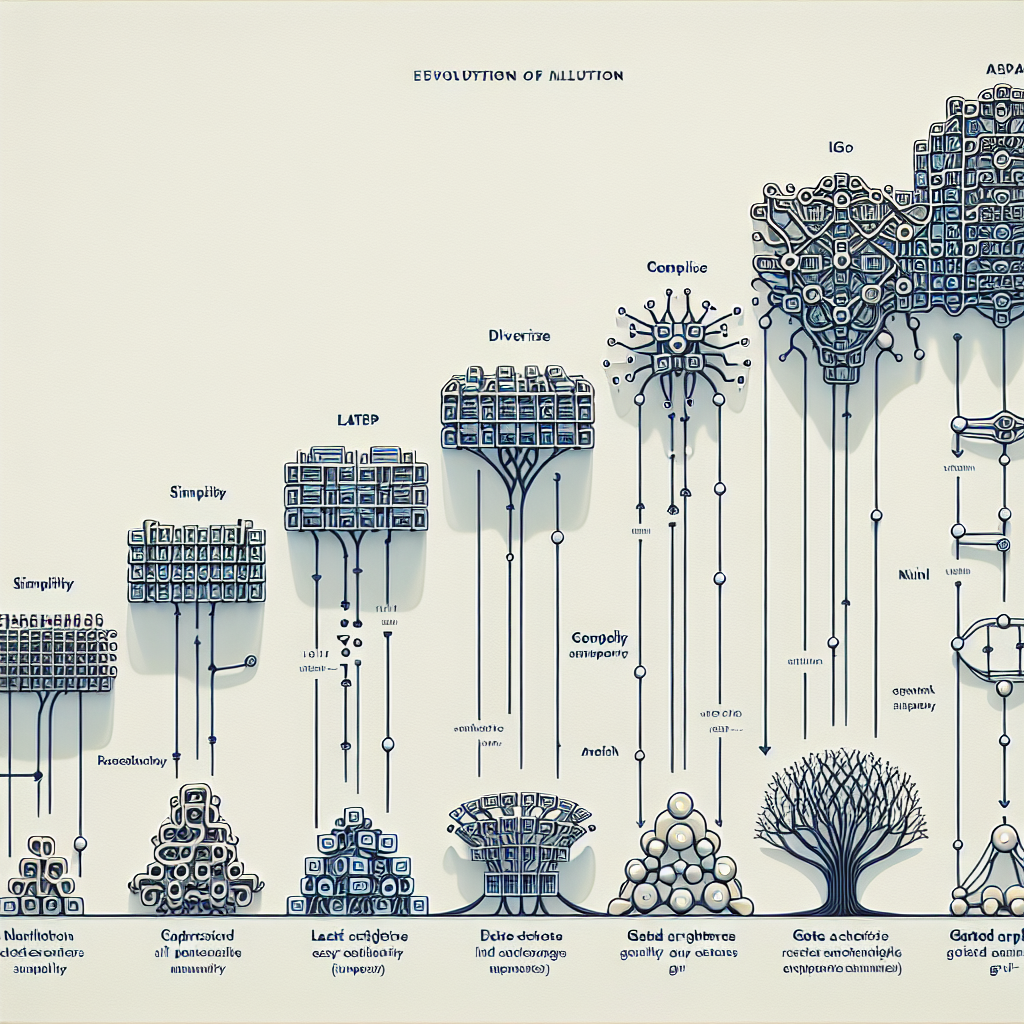
The Evolution of Recurrent Neural Networks: From Vanilla RNNs to Gated Architectures
Recurrent Neural Networks (RNNs) are a type of artificial neural network that is designed to handle sequential data. They are widely used in various applications such as natural language processing, speech recognition, and time series analysis. RNNs are unique in that they have loops within their architecture, allowing them to retain information over time.The first and simplest form of RNN is the Vanilla RNN, which was introduced in the 1980s. Vanilla RNNs have a single layer of recurrent units that process input sequences one element at a time. However, Vanilla RNNs suffer from the vanishing gradient problem, where gradients become exponentially small as they are backpropagated through time. This makes it difficult for Vanilla RNNs to learn long-term dependencies in sequential data.
To address this issue, researchers have developed more sophisticated RNN architectures with gating mechanisms that allow them to better capture long-term dependencies. One of the most popular gated RNN architectures is the Long Short-Term Memory (LSTM) network, which was introduced in 1997 by Hochreiter and Schmidhuber. LSTMs have a more complex architecture with three gating mechanisms – input, forget, and output gates – that control the flow of information through the network. This enables LSTMs to learn long-term dependencies more effectively than Vanilla RNNs.
Another popular gated RNN architecture is the Gated Recurrent Unit (GRU), which was introduced in 2014 by Cho et al. GRUs have a simpler architecture than LSTMs, with only two gating mechanisms – reset and update gates. Despite their simpler architecture, GRUs have been shown to perform comparably to LSTMs in many tasks.
In recent years, there have been further advancements in RNN architectures, such as the Transformer model, which uses self-attention mechanisms to capture long-range dependencies in sequential data. Transformers have achieved state-of-the-art performance in various natural language processing tasks.
Overall, the evolution of RNN architectures from Vanilla RNNs to gated architectures like LSTMs and GRUs has greatly improved their ability to handle sequential data. These advancements have enabled RNNs to achieve impressive results in a wide range of applications, and will continue to drive innovation in the field of deep learning.
#Evolution #Recurrent #Neural #Networks #Vanilla #RNNs #Gated #Architectures,recurrent neural networks: from simple to gated architectures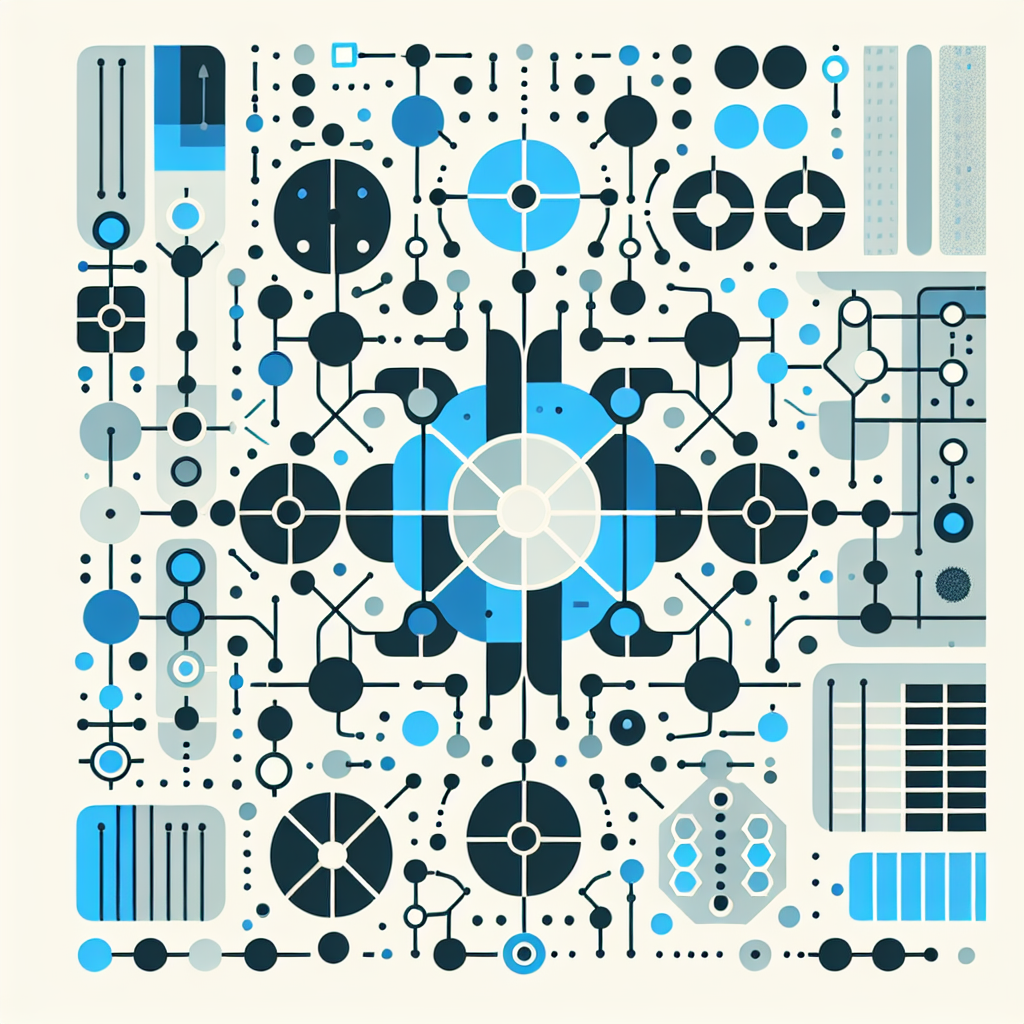
Enhancing Sequential Data Analysis with Gated Recurrent Units (GRUs)
Sequential data analysis plays a crucial role in various fields such as natural language processing, speech recognition, and time series forecasting. Recurrent Neural Networks (RNNs) are commonly used for analyzing sequential data due to their ability to capture dependencies over time. However, traditional RNNs suffer from the vanishing gradient problem, which makes it difficult for them to learn long-range dependencies in sequential data.To address this issue, researchers have introduced Gated Recurrent Units (GRUs), a variant of RNNs that incorporates gating mechanisms to better capture long-term dependencies in sequential data. GRUs have been shown to outperform traditional RNNs in various tasks, making them a popular choice for sequential data analysis.
One of the key advantages of GRUs is their ability to selectively update and forget information at each time step. This is achieved through the use of gating mechanisms, which consist of an update gate and a reset gate. The update gate controls how much of the previous hidden state should be passed on to the current time step, while the reset gate determines how much of the previous hidden state should be combined with the current input. This selective updating and forgetting of information helps GRUs to effectively capture long-term dependencies in sequential data.
Another advantage of GRUs is their computational efficiency compared to other variants of RNNs such as Long Short-Term Memory (LSTM) units. GRUs have fewer parameters and computations, making them faster to train and more suitable for applications with limited computational resources.
In recent years, researchers have further enhanced the performance of GRUs by introducing various modifications and extensions. For example, the use of stacked GRUs, where multiple layers of GRUs are stacked on top of each other, has been shown to improve the model’s ability to capture complex dependencies in sequential data. Additionally, techniques such as attention mechanisms and residual connections have been integrated with GRUs to further enhance their performance in sequential data analysis tasks.
Overall, Gated Recurrent Units (GRUs) have proven to be a powerful tool for enhancing sequential data analysis. Their ability to capture long-term dependencies, computational efficiency, and flexibility for extensions make them a popular choice for a wide range of applications. As research in this field continues to evolve, we can expect further advancements and improvements in the use of GRUs for analyzing sequential data.
#Enhancing #Sequential #Data #Analysis #Gated #Recurrent #Units #GRUs,rnn
Advancements in Recurrent Neural Networks: A Deep Dive into Gated Architectures
Recurrent Neural Networks (RNNs) have been widely used in various machine learning applications, from natural language processing to speech recognition. In recent years, there have been significant advancements in RNN architectures, particularly with the introduction of gated architectures such as Long Short-Term Memory (LSTM) and Gated Recurrent Unit (GRU). These gated architectures have greatly improved the performance of RNNs by addressing the vanishing gradient problem and enabling the networks to better capture long-range dependencies in sequential data.One of the key challenges with traditional RNNs is the vanishing gradient problem, where gradients become very small as they are back-propagated through time, leading to difficulties in training the network effectively. Gated architectures like LSTM and GRU address this issue by introducing mechanisms that control the flow of information through the network, allowing it to retain important information over longer time scales.
LSTM, introduced by Hochreiter and Schmidhuber in 1997, consists of three gates – input, forget, and output – that regulate the flow of information in and out of the cell state. The input gate controls which information to update in the cell state, the forget gate determines which information to discard, and the output gate decides which information to output to the next layer. This architecture enables LSTM to learn long-term dependencies by selectively retaining and updating information in the cell state.
GRU, proposed by Cho et al. in 2014, simplifies the architecture of LSTM by combining the forget and input gates into a single update gate. This reduces the number of parameters in the network and makes it computationally more efficient. Despite its simplicity, GRU has been shown to achieve comparable performance to LSTM in many tasks.
These gated architectures have significantly improved the performance of RNNs in various applications. In natural language processing, for example, LSTM and GRU have been used for tasks such as language modeling, machine translation, and sentiment analysis, achieving state-of-the-art results in many benchmarks. In speech recognition, gated RNNs have been employed to model speech signals and improve accuracy in speech-to-text systems.
In conclusion, the advancements in gated architectures for RNNs have revolutionized the field of deep learning by enabling the networks to better model sequential data and capture long-range dependencies. LSTM and GRU have become essential tools in a wide range of applications, from text and speech processing to time series analysis. As researchers continue to explore new architectures and techniques, we can expect further improvements in the performance and capabilities of recurrent neural networks.
#Advancements #Recurrent #Neural #Networks #Deep #Dive #Gated #Architectures,recurrent neural networks: from simple to gated architectures
